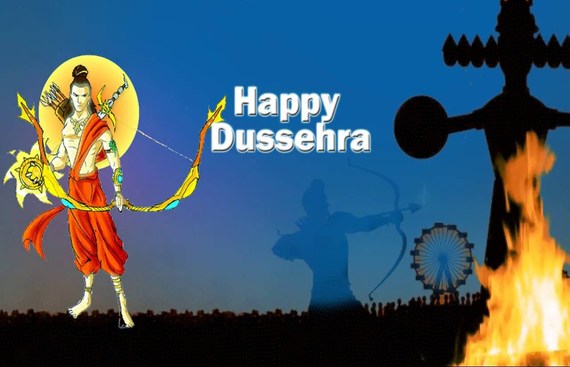9 Interesting Facts About Dussehra

India the land of culture and tradition is quite famous for celebrating varied festivals all round the year. While the year-end marks the festival season of the country. As kids, I am sure almost all of us would have eagerly awaited Dussehra, as this festival doesn’t just bring in a ten-day-long celebration, but a mini holiday as well. We are aware of the fact that Dussehra is celebrating the victory of good over evil and it is celebrated differently across the length and breadth of the country. In the north and western India, they burn the dummies of Ravana while in east and north east states they immerse Goddess Durga idol in water.
Although we have learned a lot about Dussehra since our childhood here we present nine interesting facts about Dussehra which might amaze you.
Sun Rising with Glory: The term Dussehra has been derived from the Sanskrit word ‘Dasha’ and ‘Hara’ that refers to the Sun and Defeat respectively, thus it means the defeat of Sun. According to a mythological story, it is believed that Sun wouldn’t have raised if at all Lord Rama had not defeated Ravana. It is been said that Ravana’s demonic activities were at its peak and nobody else could defeat him other than Lord Rama, and the sun won’t rise until his defeat after which sun rose with glory.
Lord Rama Seek Devi Durga’s Blessing: Mostly, it is believed that Dussehra is celebrated in honor of Lord Rama or Goddess Durga. However, Lord Rama had performed the Chandi Homa Yajna to receive blessings from Goddess Durga before he started to begin his fight with the demon king. Thus, it is narrated that Goddess Durga had blessed Lord Rama with a boon and also gave him some secretive tips to kill Ravana.
Marks the Change of Season: Dussehra marks the end of summer and the onset of winter. The climatic condition was very crucial for ancient India as it solely relied on agriculture for which nature is quite critical. Thus, the change of climate from the sultry summer to the pleasant and gloomy winter the farmers gladly celebrate and welcome the changing harvest season as well from Kharif to Rabi i.e., Kharif crop is harvest now and paves the way for Rabi crop which would be harvested post the Diwali.
Significance of 10-heads of Ravana: It is believed that the ten head of Ravana symbolizes ten bad qualities of our soul such as Anger(Krodh), Lust(Kama), Greed (Lobh), Attraction (Moh), Pride (Mada), Jealously (Matsarya), Selfishness (Swaarth), Cruelty (Amaanavta), Injustice (Anyaay) and Ego (Ahankaar). Thus, Ravana’s effigies are burnt to indicate that the above ten bad quality in us should also be burnt to ashes and revive our soul. Also, it is believed that the smoke emitted from the burning of effigies would kill the germs or bacteria that would spread infection during the winter season.
Non-Veg food During Navratri! : There an interesting story told in eastern India that is the people there consider Devi Durga as their daughter who is visiting her parental home during the Durga Puja and would be going back to her husband’s home on the tenth day of the puja. Thus, some people have a custom of eating non-vegetarian food during these auspicious days as they believe everyone would feast when their daughters visit them and not fast.
Boundless Festival: Dussehra is celebrated widely across the country, and apart from India it is also celebrated in Bangladesh, Nepal, Malaysia, and Sri Lanka with great enthusiasm. The widespread Indian across the globe has indeed spread the festival as well. It is also notably celebrated as Durgotsav in London, Sydney, Los Angeles, and more.
Rise of Dussehra: when and how did the festival begin its celebration? Well, the answer heads back to the 17th century in Mysore. It is been said, back then the King of Mysore had ordered his folks to celebrate this festival with great enthusiasm. Eventually, the celebration has spread all over the country. Presently, it is celebrated with live performances and bands of singers performing in pandals and more.
Homecoming for Devi Durga: In other parts of India, the story is widely told that Goddess Durga brings along her children Ganesh, Karthik, Lakshmi and Saraswati visits her birthplace – earth and stays here for few days and on the Vijaya Dashami day she returns to her husband Lord Shiva’s place – Kailash. Thus, continue the traditional, women belonging to various communities all the married women return to their family to celebrate this festival.
Worshipping Ravana! : It is fact is quite surprising. It is been said that the demonic King was worshipped by people. Although it is believed that Ravana was hated by all, some part of Indians had loved him dearly and there are temples that were dedicated to him. Ravana is revered in Mandasaur as it is believed that his wife Mandodari hailed from there, thus he is celebrated as their son-in-law. Also, his great devotion to Lord Shiva has made him wide, knowledgeable, and loved by his people.

